Potrebujeme váš súhlas na využitie jednotlivých dát, aby sa vám okrem iného mohli ukazovať informácie týkajúce sa vašich záujmov. Súhlas udelíte kliknutím na tlačidlo „OK“.
ASTM F3004-13e1
Standard Test Method for Evaluation of Seal Quality and Integrity Using Airborne Ultrasound (Includes all amendments And changes 12/2/2020).
Automaticky preložený názov:
Štandardná skúšobná metóda pre hodnotenie kvality tesnenia a integrita pomocou výsadkárov ultrazvuk
NORMA vydaná dňa 1.8.2013
Informácie o norme:
Označenie normy: ASTM F3004-13e1
Poznámka: NEPLATNÁ
Dátum vydania normy: 1.8.2013
Kód tovaru: NS-54847
Počet strán: 5
Približná hmotnosť: 15 g (0.03 libier)
Krajina: Americká technická norma
Kategória: Technické normy ASTM
Kategórie - podobné normy:
Anotácia textu normy ASTM F3004-13e1 :
Keywords:
airborne ultrasound, heat seal, seal defect, seal integrity, transducer, ICS Number Code 55.040 (Packaging materials and accessories)
Doplňujúce informácie
| Significance and Use | ||||||||||||||||||||
|
5.1 This method allows for the evaluation of seal quality by passing an ultrasound signal through the sealed area of a package or item. Poorly sealed areas will not transmit as much ultrasonic energy as properly sealed areas. 5.2 This method relies on quantitative analysis of ultrasound signal strength, providing a non-subjective approach to assessing package seal quality and detecting defects. 5.3 This technique has been used for inspecting a variety of materials including flexible pouch seals, rigid tray seals and other packaging components such as affixed valves. The precision and bias for any specific package and seal configuration needs to be individually determined and validated. 5.4 The C-Scan approach is useful for laboratory applications or off-line seal inspection. The L-Scan approach can be used for on-line, real time inspection of seal quality. The sensitivity of either approach to detect a given defect size and level of severity needs to be individually determined. 5.5 Sound waves propagate at different speeds through different materials generally moving faster through more dense materials. The acoustic impedance (expressed as g/cm2·μs) is the product of density (g/cm3) and velocity (cm/μs). Of particular importance is the extreme difference between the impedance of air and that of any solid material. Any gap or poorly bonded area can be readily detected.
|
||||||||||||||||||||
| 1. Scope | ||||||||||||||||||||
|
1.1 This standard method describes the technology and testing procedures that can be used to detect seal defects in the size range of 1 mm and characterize seal quality in a variety of packaging styles using airborne ultrasound technology. 1.2 This test method does not purport to be the only method for measurement of seal quality. 1.3 Heat seals and other package components can be tested in flexible, semi-rigid and rigid packages. Only the precision and bias for flexible package seals were evaluated in a recent ILS included in the method. The precision and bias for any specific package needs to be individually determined. 1.4 On-line, real time inspection of seals can be considered particularly in the L-Scan mode. 1.5 This method provides a non-destructive, quantitative, non-subjective approach to flexible package seal inspection. 1.6 The values stated in SI units are to be regarded as standard. No other units of measurement are included in this standard. 1.7 This standard does not purport to address all of the safety concerns, if any, associated with its use. It is the responsibility of the user of this standard to establish appropriate safety and health practices and determine the applicability of regulatory limitations prior to use. |
||||||||||||||||||||
| 2. Referenced Documents | ||||||||||||||||||||
|
Podobné normy:
Historická
1.3.2009
Historická
1.4.2012
Historická
1.4.2012
Historická
1.4.2012
Historická
1.4.2012
Historická
1.4.2012
Odporúčame:
Aktualizácia technických noriem
Chcete mať istotu, že používate len platné technické normy?
Ponúkame Vám riešenie, ktoré Vám zaistí mesačný prehľad o aktuálnosti noriem, ktoré používate.
Chcete vedieť viac informácií ? Pozrite sa na túto stránku.


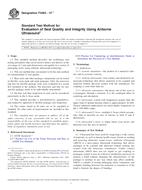
 ASTM D5077-90(2009)..
ASTM D5077-90(2009)..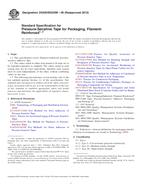 ASTM D5330/D5330M-06..
ASTM D5330/D5330M-06..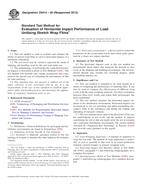 ASTM D5414-95(2012)..
ASTM D5414-95(2012)..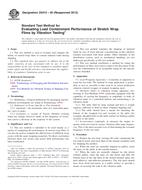 ASTM D5415-95(2012)..
ASTM D5415-95(2012)..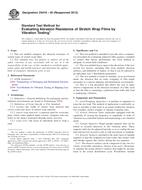 ASTM D5416-95(2012)..
ASTM D5416-95(2012)..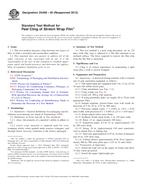 ASTM D5458-95(2012)..
ASTM D5458-95(2012)..
 Cookies
Cookies
